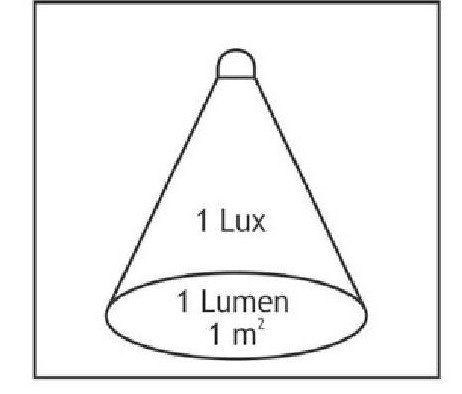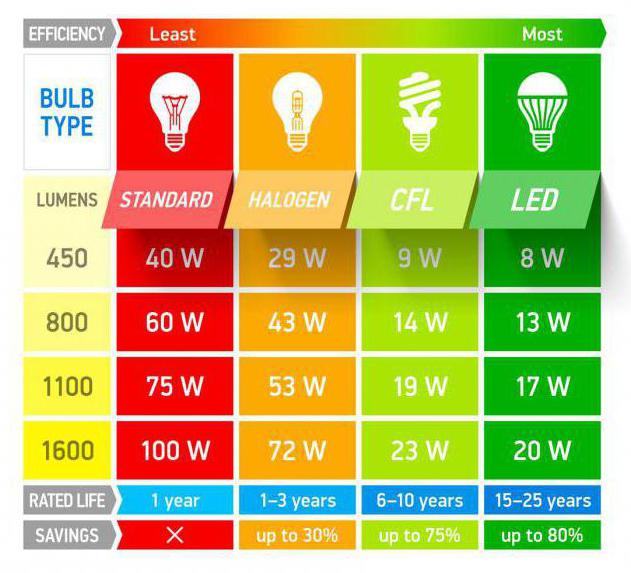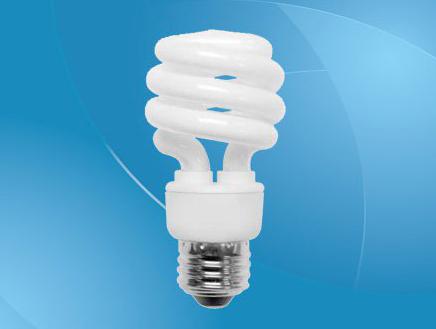In Soviet times, when choosing a light bulb, consumers were guided by the number of watts in it. The more of them - the brighter this device shone. However, today (when many new varieties of lamps have appeared on store shelves), we increasingly come across such a concept as “lumen”. What is it, how does it differ from a watt, and what is the unit called lumen per watt? Let's find the answers to these questions.
What is "lumen"
In the middle of the twentieth century. to avoid confusion in units of measurement between different countries, the universal SI system was introduced. It is thanks to her that we have watts, amperes, meters, kilograms, etc.
According to it, (visible electromagnetic radiation) is. In fact, these units measure the amount of light emanating from its source.
Also, to the question of what “lumen” is, you can answer that this is the name of a famous Russian rock band from Ufa. Having started its activity in 1998, for almost twenty years it continues to be loved by many listeners in the Russian Federation and abroad.
Origin of the word
Having learned what a lumen is, it is worth clarifying where this word came from in the Russian language.
Like most of the names of units of measurement in the SI system, the term in question is Latinism. It is derived from the word for "light" (lūmen).
At the same time, some linguists argue that the noun could also be formed from the Proto-Indo-European word leuk (white) or from lucmen (the meaning is not exactly established).
What is the difference between lumen and lux
Considering the meaning of the word "lumen", it is worth mentioning such a concept close to it as "lux".

Both of these terms refer to light energy units, however, lumens are all the light emitted by the source, and lux is the amount that reached the illuminated surface, and was not stopped by some kind of obstacles with the formation of shadows.
The interdependence of these units can be reflected in the following formula: 1 lux = 1 lumen / 1 square meter.
For example, if a lamp illuminating an area of 1 m 2 emits 50 lumens, then the illumination of this place is 50 lux (50lm / 1m 2 \u003d 50 lux).
However, if the same lamp with the same amount of light is used for a room of 10 m 2, then the illumination in it will be less than in the previous case. Only 5 lux (50lm/10m 2 = 5 lux).
In addition, such calculations did not take into account the presence of various obstacles that prevent the light rays from reaching the surface, which significantly reduces the level of illumination.
In connection with this situation, in any country in the world there are lighting standards for various buildings. If it is below them, a person's vision does not receive enough light and deteriorates. For this reason, when planning to make repairs or rearrangements in your home, it is always important to take this nuance into account.
There are also a number of design programs in which such calculations are made automatically.
Lumen and watt
Having learned the difference and meaning of lumen and lux, you should pay attention to another unit of the SI system - watt.
Due to their use for light bulbs, some believe that these units can be freely correlated with each other. However, this is not quite true.
The fact is that in watts the power of energy that a light bulb consumes is measured, and in lumens - the amount of light that it emits.
During the existence of only incandescent lamps, it was easier to calculate the amount of light from such a device. Since a 100 W light bulb gave out about 1600 lm of light. While a similar device at 60 W - 800 lm. It turned out that the more energy consumed, the better the lighting.
But today it's not like that. In recent decades, several new types of lighting sources have been invented (luminescent, etc.). Their advantage is economy. That is, they shine brighter with less energy used.
In this regard, if necessary, to draw up a relationship between watts and lumens, you need to take into account the type of lamp and look for its luminosity in special tables.

It is worth noting that an ordinary person sometimes does not want to rebuild and understand all these subtleties. Therefore, most domestic manufacturers of new-type light bulbs on the labels indicate not only the number of lumens, but how much less watts this device consumes (compared to an incandescent lamp). For example: a 12 watt lamp produces light as at 75 watts.
The unit of measure "lumens per watt": its meaning and scope

For example, a classic 40 W incandescent lamp has a light output of 10.4 lm/W. At the same time, for an induction lamp with the same power, this indicator is much higher - 90 lm / W.
For this reason, when choosing a lighting device for your home, you should still not be too lazy, but find out the level of its light output. As a rule, such data is on the labels.

